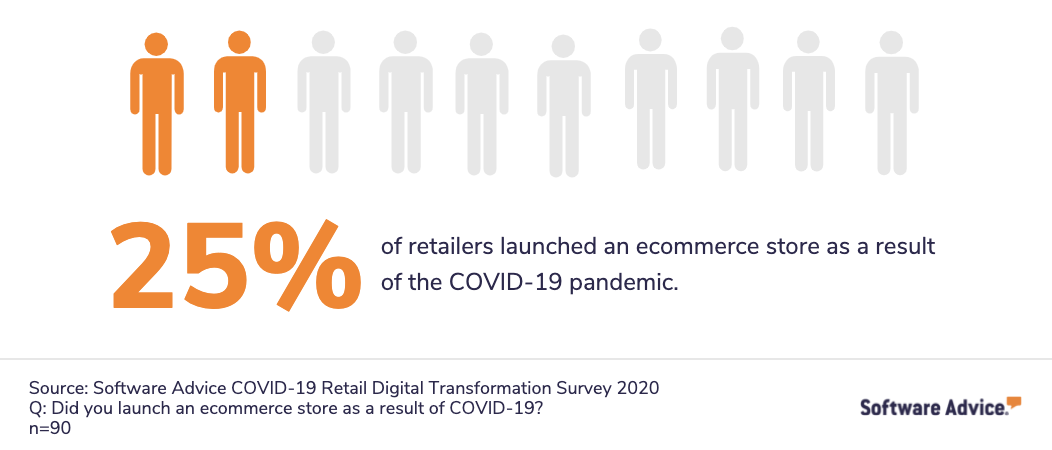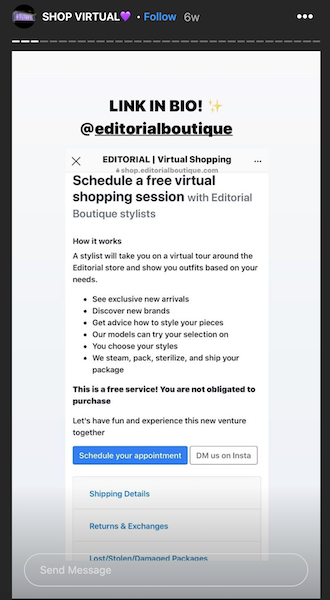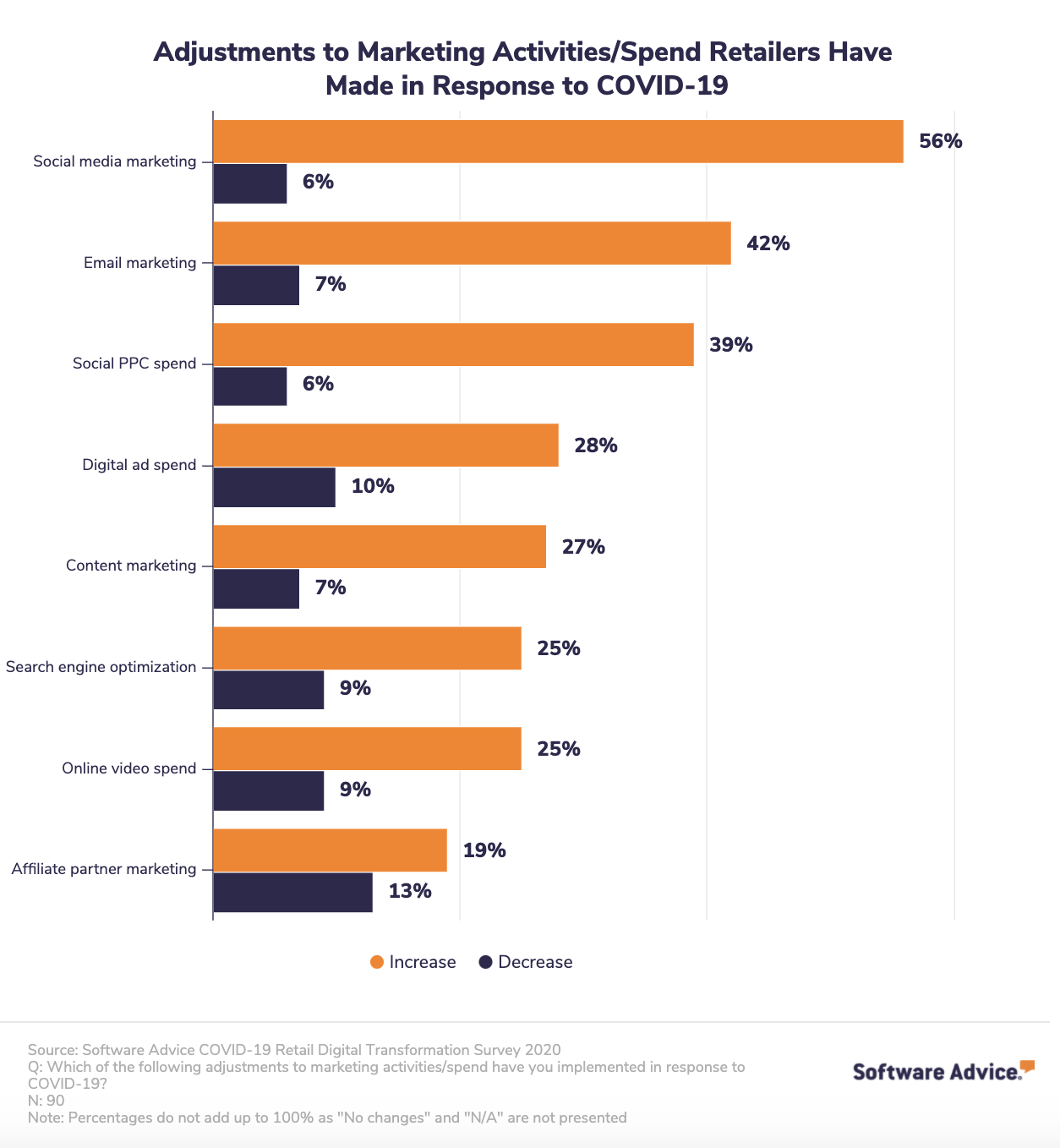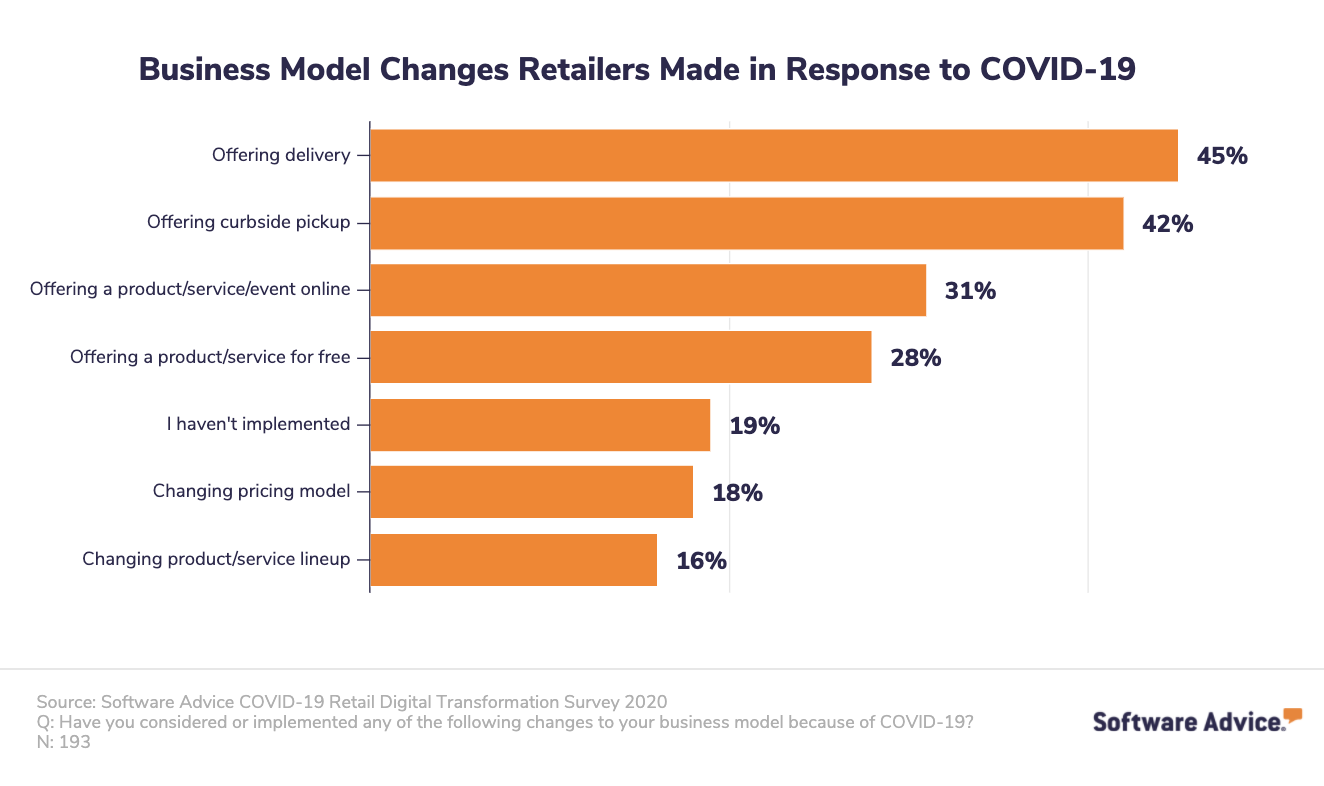The Retail Pivot: How Retailers Have Adapted Through Digital Transformation
As soon as storefronts shuttered in the wake of COVID-19, retailers had to adapt their business models. The pandemic is reshaping the landscape of American retail and accelerating digital transformation rapidly.
We surveyed nearly 200 retailers to find out how they’re pivoting their business models, and we found that what would’ve taken years is now happening in just a matter of months.
The results are unanimous: All are adopting or ramping up the use of digital platforms in some form to implement their newly evolved business models.
Businesses are launching ecommerce stores, introducing alternative delivery and pickup options, and reallocating their marketing resources to where they are needed most.
Below, we share key takeaways based on our data, and make recommendations for how you can plan to implement the same and set your retail store up for a post-COVID-19 future .
Key takeaways:
Consumer shopping will shift online [Read more]
Social media will be the main channel of communication for retailers [Read more]
Alternative delivery and pickup options will be expected by consumers [Read more]
Retailers must upgrade their POS to adapt to changing needs [Read more]
1. Consumer shopping will shift online
Key stat: About a quarter of brick-and-mortar stores launched ecommerce stores as a result of COVID-19.
The shift toward ecommerce had been felt for some time, but it is now being accelerated by COVID-19.
Prior to the pandemic, ecommerce sales already represented the bulk of overall retail sales growth in the United States. Some $600 billion in online sales accounted for 56% of overall retail growth in 2019.
The pain has been especially sharp for traditional brick-and-mortar stores: Our survey found over a quarter of brick-and-mortar stores in the United States experienced a decrease of as much as 60% in revenue since coronavirus hit.

As storefronts started closing as a result of the pandemic, retailers adapted quickly to social distancing. At least a quarter of brick-and-mortar retailers launched ecommerce stores, our survey found. Between March 23-30, ecommerce marketplaces saw a 14% increase in volume, according to data from the Forter Global Merchant Network.

How one traditional brick-and-mortar moved into online sales exclusively
One such retailer is Editorial Boutique, a Montreal brick-and-mortar fashion and apparel store that has been operating since 2011.
When coronavirus hit and store traffic decreased, the retailer made the decision to close mid-March. Around the same time, all its new spring shipment—initially delayed because of COVID-19—arrived at its doorsteps.
Editorial Boutique founder Jackie Wong had to find a way to sell 30 boxes worth of inventory.
“We were always conscious that ecommerce was something we needed to do, but it never really happened. When our new inventory came, we knew we had to do something quick,” says Wong. “It wasn’t even a question of getting something out there that was our wishlist—it was a matter of just getting our products out there.”

Brick-and-mortar store Editorial Boutique pivoted to launch an ecommerce store in just 48 hours (Source)
Initially still hesitant, Wong got the final push to go into ecommerce when she realized she needed to have an online presence site linked to her newly added Instagram shopping feature.
She then turned to its existing POS provider Lightspeed and, with their help, launched an ecommerce site in 48 hours.


Customers can schedule a free virtual shopping session with its team of stylists. (Source)
By moving entirely online during the pandemic, Wong says the boutique has seen “exponential engagement” from customers with comments, feedback, and questions for its virtual styling Facebook appointments and new Instagram shopping feature.
Takeaway: “We don’t need a website” is no longer something small businesses can boast about in these current conditions. It is no longer a question of “whether” or “when” to open an ecommerce store.
As more customers shift online, traditional brick-and-mortar stores must bring the storefront online to offset or mitigate any losses from closures or drops in foot traffic. Ecommerce is the path to survival and future-proofing your retail business.
2. Social media will be the main channel of communication for retailers
Key stat: Over half of retail respondents (56%) say they increased their social media marketing in response to COVID-19.
As all large public gatherings have been cancelled, Americans, stuck at home, are spending more time online and seeking out ways to stay connected through social media platforms.
Our survey found that over half of retail respondents (56%) have increased their social media marketing in response to COVID-19, while affiliate partner marketing activities experienced the biggest cuts (13%).

In March 2020 alone, Facebook and Instagram saw a 40% increase in usage, with views for Instagram Live and Facebook Live doubling in one week. Similarly, Instagram users posted 6.1 Instagram Stories per day, on average, an increase of 15% week-over-week, while Instagram views also grew by 21%, according to influencer marketing platform Klear.
In response, retailers are shifting and reprioritizing their marketing investments during COVID-19 to digital communications such as social media and email marketing to meet their customers where they’re at the most.

How a meat company saved its business through social media and word of mouth
Prior to COVID-19, Majestic Meat Company’s business model was focused around delivering premium cuts of meat to high-end, local restaurants on a per-order basis.
When those restaurants had to close, orders slowed sharply and its delivery drivers were no longer needed.
For its owner Raymond Zaelit, that meant ending up with an excess of products as customers were no longer able to place in-store orders.
After decades of sticking to the same business model of in-store sales, Zaelit pivoted quickly to add an online ordering system on their website and announced the changes on social media.


Majestic Meat updates customers of its latest offerings on Instagram (Source)
Word got out quickly through Facebook and Twitter, and its delivery drivers were called back when the local community stepped up to order the meats.
By shifting to a different business model and making prompt announcements to update its following via social media on what’s being sold, Majestic Meat Company was able to turn the trajectory of its business around.
Takeaway: It’s not enough to just launch an ecommerce store. True digital transformation in retail means your store must be integrated from your brick-and-mortar location, to your online store, to your social media channels.
Retailers that are able to allocate or reprioritize their marketing efforts should tap into social media platforms like Facebook, Twitter, or Instagram to stay connected with loyal customers and find new ones for the foreseeable future.
3. Alternative delivery and contactless pickup options will be a consumer expectation
Key stat: Nearly 90% of retailers have considered or have implemented pickup and delivery services as a result of COVID-19.
As online sales have gathered steam, so have pickup and delivery services, evident in our survey results. The number of orders placed online and picked up at stores by customers surged 208% between April 1 and April 20, 2020 compared with a year ago, according to Adobe Analytics.

Reluctant to enter public places, consumers are demonstrating massive adoption of delivery and pickup services, with groceries leading the way and setting an example for how other retailers can capitalize on new buyer needs.
According to Sense360, about 41% of U.S. households used grocery delivery for the first time between March and April, compared to just 13% of U.S. households in August 2019. And that demand doesn’t seem to be going away. As much as 37% of shoppers report that they will continue to use online grocery pickup or delivery in the future.
As consumers prioritize speed, convenience, and safety, providing that through delivery and contactless pickup options are now table stakes for retailers.
What to consider when implementing delivery and pickup as a result of COVID-19:
Reduce contact on delivery: Establish protocols on how to maintain social distancing upon delivery to minimize risks of spreading infection, such as doing away with tools that require drivers to hand over devices to customers for their signatures.
Equip new drivers: Having to scale your delivery operations will require hiring new drivers and providing training. Equipping drivers with tools that can onboard them and track their routes will be valuable for both your new employees and your business.
Consider apps to help automate the process: While delivery and curbside pickup aren’t new for large retail stores, smaller retailers can offer similar services if they have the right tools to help manage the online ordering and delivery process.
Takeaway: The pandemic won’t last forever but new shopping habits may persist. Retailers will need to fulfill the new needs of customers through alternative and multiple delivery options (speed), minimal fees (value), shop when they want (convenience), and contactless delivery and pickup (safety).
4. Retailers must upgrade their POS to adapt to changing needs
Key stat: Nearly 70% of brick-and-mortar retailers have been impacted by supply chain delays and almost half have experienced inventory shortages because of COVID-19.
Supply chain (67%) and inventory issues (48%) are top concerns and challenges for retailers during the pandemic, our survey found. Part of providing a positive customer experience includes managing out-of-stocks, stock clearance, and delivery delays.
Doing that requires real-time visibility across channels. That means knowing where all your inventory is, what’s going out and what’s coming in, as well as having the ability to shift it all around.
Retailers that invest in inventory management tools get critical visibility into their inventory, giving them the ability to adjust store fulfillment currently and in a post-COVID world.
To manage all the above seamlessly, retailers must update and integrate their digital strategy to have one unified data platform connecting their brick-and-mortar and online store, to adjust to shifting customer expectations by the month, week, or even day.
How retailers can address supply chain challenges to adjust to consumer demand:
Establish daily conversations with suppliers to renegotiate: For Bayard Winthrop, CEO of apparel company American Giant, having daily meetings with 40 different domestic suppliers has been key to navigating this uncharted territory. “Because of my domestic supply chain, I am currently renegotiating summer production, and I’ve got all fall on pause,” shares Winthrop.
Reallocate, redeploy, and retrain employees in high-demand areas: Shortly after her store had to close its doors temporarily, Editorial Boutique’s Wong pivoted her team of in-store stylists to providing Facetime styling appointments for its customers. Through these appointments, the boutique was able to stay true to its “personalized shopping experience to create connections with customers,” similar to in-store. Our survey found an increased focus on customer service, with as many as 80% retailers creating roles in customer service as a result of COVID-19.
Leverage automation within supply chains: Artificial intelligence and predictive technology have a big role to play in ensuring your supply chain is operating smoothly. Speak to your vendor about how AI is being leveraged through reporting features on your POS to understand how it can streamline processes and automate laborious and routine tasks for you.
Takeaway: Whether it’s in their supply chain or inventory management, retailers must address immediate gaps in their business before it’s too late. As demonstrated above, technology can step in to provide immediate value and help address those shortfalls even after the pandemic is over.
How we can help with your digital transformation in retail
Retailers are facing a “reset” in their digital transformation journey. After doors reopen—and they will—retailers will need to emerge with new eyes to provide the new shopper with a safe, positive, and seamless shopping experience online and offline.
If that is you, we’re here to point you in the right direction:
Talk to our retail software advisors: Instead of spending days researching software options, we can help cut that search down to just a matter of minutes. Tell us what your retail business needs and we’ll send a shortlist of software best suited for you. Here are your options: Schedule a phone call at a preferred time or click here to start live chatting with one of your advisors now.
Check out our other resources:
Ecommerce Buyers Guide: Learn about common functionalities and key integrations for your online business.
9 Tools To Start or Grow Your Retail Store Online: Find out what types of software are essential or optional for your type of retail business.
5 Popular Free and Open Source Retail POS Software: A list of free and open source software targeted at various retailers.
Methodology
The Software Advice COVID-19 Retail Digital Transformation Survey was conducted in April 2020. We collected 503 responses from small business leaders, defined as presidents, vice presidents, C-suite members, owners, or founders at U.S. companies with 2-250 employees.